Soil
Soil and its composition is one of the most widely debated subjects for bonsai enthusiasts, concerned to ensure their trees grow with vigour. Over recent years, the availability of such soils for bonsai has improved greatly but the quality varies enormously. We had high hopes that the days of peat based, ungritted bonsai mixes had passed. Unfortunately, this has not proven to be so, as recently as January 2019 we visited a large garden hoping to purchase bonsai compost to repot a family member’s bonsai (we were visiting from 200 miles away and not expecting to be repotting). We returned triumphantly to their house, opened the bag labelled “Bonsai Compost” and found nothing but peat and a little sand. It appears that some manufacturers are slow or unwilling to learn.
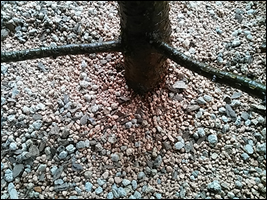
Bonsai are confined to a small quantity of soil which is contained in a small bonsai pot, and on which their very existence depends. The medium in which your bonsai is planted plays a key role in whether it will thrive or die.
If a bonsai looks unhealthy and lacks vigour, it is often because it has been planted in poor bonsai soil or maybe, planted in normal garden soil which frequently is badly drained, hardens when it gets dry and cakes around the roots.
Using the right soil mixture for your bonsai trees is crucial. Soil is important to supply your trees with nutrients, but it also needs to drain properly yet provide enough aeration and retain moisture. Most bonsai shops sell ready-mixed soils, but not always of the best quality. Making it up yourself will save money and enables you to adjust mixtures according to tree-species.
The quality of soil used directly affects the health and vigor of your tree. Unhealthy trees that lack vigour are very often planted in a poor soil mixes
There are a number of requirements in a good soil mix:
GOOD WATER-RETENTION – To be able to hold sufficient water to supply moisture to the bonsai between each watering.
GOOD DRAINAGE – Excess water must be able to drain from the pot. Soils without such drainage are liable to a build-up of salts and can cause the roots to rot, killing the tree.
GOOD AERATION – The particles used in a bonsai mix should be large enough to allow tiny air pockets between each particle. The tree needs oxygen for the roots, and to allow good bacteria to survive, so the processing of food will take place before being absorbed by the root-hairs or sent to the leaves for photosynthesis.
Bonsai Soil Mixes
Ready-mixed bonsai soils vary enormously from one supplier to the next; in general terms it not wise to choose the cheapest.
The most usual components for any bonsai soil mixture are:
- Akadama
- organic potting compost and
- fine gravel (grit)
All of which should be sieved through a wire mesh sieve to sieve out dust and to remove any lumps that may have accumulated.
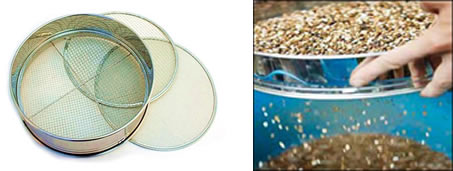
1. Akadama
This is a baked Japanese clay, specifically produced for bonsai purposes. It often contains dust which should be sifted out before use as it cakes once water is added. Akadama is usually sold in 14kg bags and available in coarse, medium and fine grades. Medium grade is the most commonly used.
Keep in mind that after about two years Akadama starts to break down, reducing aeration. This means that regular repotting is required, or that Akadama should be used in a mix with well-draining soil components. Akadama is rather expensive and is therefore sometimes substituted with similar fired/baked clays that are easily available in any garden center. Cat litter, often referred to as ‘Kittydama’, containing ‘molar’, is a very good and much cheaper substitute and can be purchased in any supermarket – just be certain you do not buy one with an odour suppressant as it may contain chemicals that are harmful to your tree.
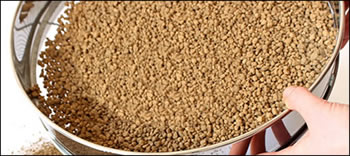
2. Organic Potting Compost
This usually includes peat moss, perlite and sand. It has disadvantages if used by itself as it retains water and does not aerate or drain very well, but as part of a mixture it is perfectly effective.
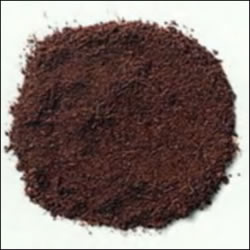
3. Fine Gravel, Grit,Fired Clay or Lava Rock
It is important to provide a well-drained, aerated bonsai soil. It can also be used as a bottom layer in pots to enhance drainage even further.
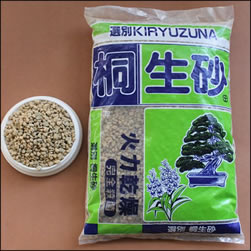

Recommended Bonsai Soil Mixtures
Different tree-species demand different soil-mixtures, try to find the optimum mixture for each individual tree.
There are two main mixes, one for deciduous trees and one for coniferous trees. Both mixtures consist of Akadama (the water retention component), compost or peat (for the nutrients within and moisture retaining qualities) and Lava rock (to provide the mixture with aeration and drainage).
Note that both mixtures should be adapted to your local circumstances. If you do not have time to check your trees twice a day, add more Akadama (or even add organic potting compost) to your mix, to increase its water retention qualities. If you live in a wet climate, add more lava rock (or even grit) to enhance the draining qualities of your mixture.
Deciduous Tree Bonsai Soil
50% Akadama
25% compost
25% Lava rock, fired
Coniferous/Pine Bonsai Soil
33% Akadama
33%compost
33% Lava rock, fired
As trees like Azaleas and Camellias prefer an acid soil, then use an ericaceous soil such as peat, and Kanuma (also clay granules which must be sieved before use); this is used in the Azalea growing regions of Japan.
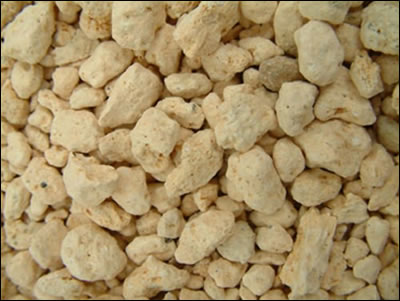
Kanuma
Web design: nysys